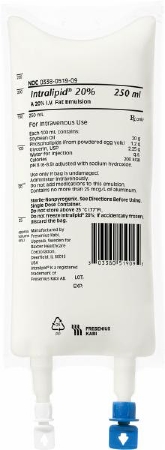
CLINIMIX and CLINIMIX E may be used to treat negative nitrogen balance in patients. Indications and Important Risk Information for ClinimixĬLINIMIX (amino acids in dextrose) Injections and CLINIMIX E (amino acids with electrolytes in dextrose with calcium) Injections are indicated as a source of calories and protein (and electrolytes for CLINIMIX E) for patients requiring parenteral nutrition when oral or enteral nutrition is not possible, insufficient, or contraindicated. The most common (5%) adverse drug reactions reported during Clinolipid injection clinical trials were nausea and vomiting, hyperlipidemia, hyperglycemia, hypoproteinemia and abnormal liver function tests. Reduce dose of Clinolipid injection and monitor serum triglyceride levels in patients with serum triglyceride concentrations above 400 mg/dL. If patients develop liver test abnormalities consider discontinuation or dose reduction. Parenteral Nutrition Associated Liver Disease (PNALD) has been reported in patients who receive parenteral nutrition for extended periods of time, especially preterm infants. There is an increased aluminum toxicity risk in patients with impaired kidney function, including preterm infants. Monitor fluid status closely in patients with pulmonary edema or heart failure.Ĭontent of vitamin K may counteract anticoagulant activity.Ĭlinolipid injection contains no more than 25 mcg/L of aluminum. Monitor for signs and symptoms of fat overload, essential fatty acid deficiency (EFAD) and infections including laboratory test results (including leukocytosis and hyperglycemia) and frequent checks of the parenteral access device.Ĭarefully monitor severely undernourished patients and slowly increase their nutrient intakes, while avoiding overfeeding, to prevent refeeding complications.įrequent clinical and laboratory determinations are necessary throughout treatment. When admixing Clinolipid, protect the admixed parenteral nutrition solution from light.Stop infusion immediately and treat patient accordingly if signs or symptoms of a hypersensitivity or allergic reaction develop. Severe hyperlipidemia or severe disorders of lipid metabolism.Known hypersensitivity to egg or soybean proteins, the lipid emulsion and/or excipients.The use of Clinolipid injection is contraindicated in patients with the following:

#Fat emulsion infusion free

Deaths in preterm infants after infusion of intravenous lipid emulsions have been reported in the medical literature.
#Fat emulsion infusion full
Please read the accompanying full Indication(s) and Important Risk Information, including the Boxed Warning for Death in Preterm Infants, and the Package Insert for full Prescribing Information.


 0 kommentar(er)
0 kommentar(er)
